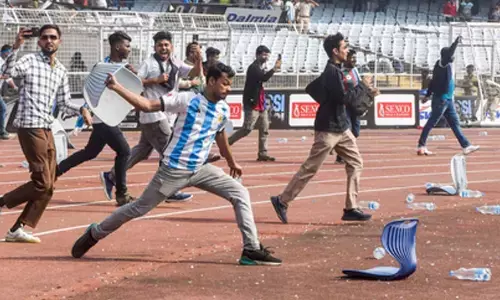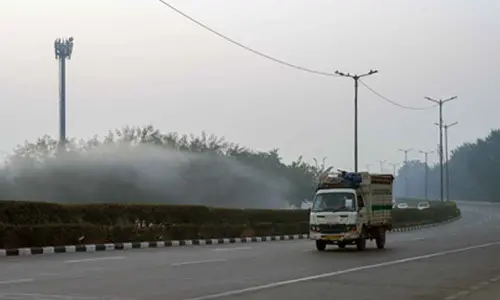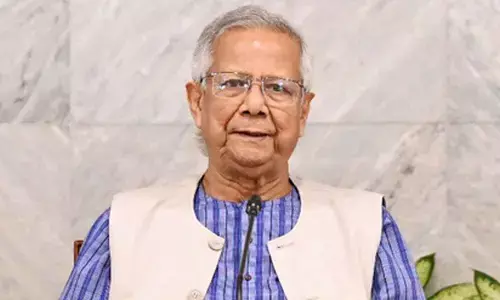India’s hate crime

India wants to do one-up on China in Africa. But in its own capital, it is unable to put its act together on matters African.
India wants to do one-up on China in Africa. But in its own capital, it is unable to put its act together on matters African. A case in point is the treatment meted out to two students from Gabon and one from Burkina Faso – all in their twenties – at the Rajiv Chowk (formerly Connaught Place) Metro Station on September 30.
The sequence of events that had culminated in the display of blatant racialism remains unclear. What is not shrouded in mystery thanks to mobile phone cameras is the fact that a mob hounded the three African youth “as the cops watched,” as the headlines screamed the next day. The Delhi Police have not yet made any breakthrough in their probe.

In what way was the incident different from what had happened to some Indians in Australia in the not too distant past? Reports of assault on Indian students created country-wide anger and resentment. Nobody was willing to accept the Australian explanation that the attacks were not ‘racial’ but acts of crime by misguided elements. Incidentally, in Australia what gave away the Indian victims was not only their appearance and colour of skin but also their ‘accent.’ Fortunately, Indian racialists have not gone to the extent of picking up prey on the basis of his or her speech. In the US too, Indians have been subjected to “acts of thuggery” which often end up as fatal attacks. It was a post-9/11 development. For the American police, such attacks are ‘hate crime’ – another way of describing a racial crime.
The September 30 attack contradicts the view that India is one of the few countries where foreigners are welcomed with open heart. We are exhorted to treat the (foreign) guests as gods. Clearly, there is an unwritten caveat to it: the god-like treatment is reserved only for the white-skinned. Actually, some might question even this caveat because many ‘white’ guests, especially young women, have had very nasty experience in India – all because they stood out in a crowd of Indians with the colour of their skin! What had caused the collective outpouring of anger against three unarmed African youth is not germane to our discussion. Nor is the ability of the police to watch nonchalantly the proceedings. Besides the police and CISF, the metro station has on duty several ‘marshals,’ whose job is crowd management. All of them failed miserably, and their collective failure only highlights an unacknowledged racialism in practice in Delhi. At best of times, the average Delhi citizen and average Delhi policeman find themselves on the same page when it comes to showing disrespect for fellow Indians, especially those from the north-east since they look different.
No surprise the north-easterners still find it difficult to become part of the mainstream, treating the plains’ people as “wais” (foreigners). Their reservations vis-a-vis the outsiders have had its roots in history; the British colonial masters allowed the north-eastern region to remain isolated from the rest of India and thus contributed no less to the sense of alienation among the people beyond the chicken’s neck. The situation should have changed over the past six decades. It did not. Instead, the hapless youth from the north-east have become regular targets of the ruffians in Delhi because they look ‘Chinese’; of late the malevolent intent of these louts is being expressed towards the African youth, who like the bright boys and girls from the north-east are coming to Delhi in increasing numbers. Not all of them come on the Government of India scholarships. Many of them are enrolled in private universities, paying hefty fees. They are attracted to India because they find the fee structure is reasonable when compared to the West. Also because, they find that the cost of living is not high whether it is Delhi or Pune which also has a large concentration of African and Middle East youth.
In a manner of speaking, both the education sector and the country as a whole should be happy that while our own boys and girls are still loath to give up the fixation with the American Ivy League, our institutions are attracting foreign students. The government did not contribute to this phenomenon. In the education field also, it is the private sector that has acted as its own catalyst for growth. Within India, there was a time, when Maharashtra, particularly areas around Shirdi and Pune, were a big draw for boys from North India with their engineering colleges. One used to hear several complaints of discrimination faced by these boys since they spoke a different language, and had different food habits. Not any longer.
Several engineering and medical colleges have come up in and around Delhi. And the ‘usual exodus” has by and large become a trickle. Some such thing will happen in respect of African youth too as their countries develop and offer better facilities for studies at home. Till such time it is incumbent on India to do its best to hide its ugly spots which no Fair and Lovely cream can erase from the faces of the citizens of Delhi who are becoming bolder and bolder in showing their bias towards the dark skin and those who look ‘different’. There can be no denying that the diplomats of all the 54 African countries view such incidents with concern. Repeat of such mob fury can adversely affect the ties with African countries – the last thing the Government of India would want, considering the pains that are being taken to woo the African continent in the face of aggressive Chinese ‘invasion’ of the dark continent. New Delhi had planned to host the first ever Africa Summit on December 4 billing it as one of the biggest international events in the country in years. The outbreak of deadly Ebola made South Block put breaks on the preparations even after invitations went out to some one thousand ministers, government officials and business leaders from more than 50 African nations. As and when the summit takes place, early next year, hopefully, it will represent a giant stride in building better relations and enlarging economic ties with Africa. The India-Africa trade is about to reach $100 billion.
African boys and girls here in India are not mere students but they are the future leaders of their nation with which we want to forge long-lasting ties in competition with the Dragon in a world, which has become a global village, guided by not sentiment but hard economics. Short-sighted Indians or Delhiites should also remember one more thing. It is that it will be a tragedy of catastrophic scale if people in other countries started emulating their behaviour with the huge Indian Diaspora.













